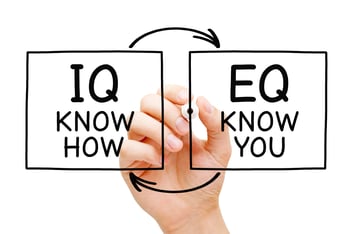Understanding the Relationship Emotion and Sensation: A Guide for Parents and Professionals
No video selected
Select a video type in the sidebar.
If you have kids, or work with kids, or have just been around kids, you’ve probably seen something like this: One minute, little Billy is running around like a feral animal, laughing and happy, and the next, his foot catches on an uneven bit of the sidewalk, and he goes down like a sack of rocks. There’s that moment, the wide-eyed look of shock before the pain hits, where his brain is trying to register how, in a split second, his entire world has turned upside down. It’s a moment of fear and confusion. The tears start to flow before he even looks down to see that a postage-stamp-sized chunk of skin on his knee now resembles a thin sliced piece of roast beef. The question is, how do you respond?
Interestingly, the way Billy relates to taking a spill will be defined more by your reaction than by the actual pain and fear he is experiencing. If you respond with hysterics, Billy’s nervous system will be trained to respond to future spills with hysterics of his own. If your response is overly affectionate, Billy’s nervous system will tie pain and fear to receiving affection. Now, I’m not suggesting you should just point and laugh. That would make you a monster. But I am saying your response should be calm and measured with the goal of creating a distinction between the physical sensation of pain and the emotional feeling of fear. It’s okay for him to be scared. You probably would be too if you’d just taken a faceplant. Let him know that he’s okay, he’s safe, and that he doesn’t need to be afraid anymore. Acknowledge the pain he’s feeling, let him know you understand how sucky it is to bang up your knee, but that you’re going to get a bandage on it and, before he knows it, he’s going to be as good as new.
Physical and emotional sensations can get wired together in ways that don’t always serve us well. It makes sense since both live in our nervous system. We’ve all had the feeling of 'butterflies in our stomach' when we're anxious or nervous, we 'get hot under the collar' when we're angry, we feel 'a pit in our stomach' when we experience sadness. We describe emotions as living in parts of the body because they literally do. They get mapped into our nervous system either through repetition or in moments of trauma. And for some of us, our first cue for an emotional response is actually a body sensation. It’s pivotal to name the physical sensation and tune in to what emotional expression is present. Naming these two aspects individually will create a separation between them so that we gain perspective and start to untangle emotion from sensation.
Leila is up for a big promotion. It hinges on her delivering a major presentation to a potential client. The only problem is, Leila is deathly afraid of public speaking. In the days leading up to the presentation, she wakes up every morning feeling like a troop of angry chimpanzees has taken up residence in her stomach. She has hot flashes and breaks into a sweat for no apparent reason. Her body is screaming at her to consider stepping in front of a bus rather than go through with the presentation. The physical discomfort is so unbearable that she seriously considers calling the whole thing off and joining a nunnery.
Leila’s scared. And that’s okay. She’s a human being and just about anyone in her position would be scared. The monkeys in her belly and the sweaty armpits are simply physical responses to the fear. But she’s okay. She’s safe. With some simple exercises, she can calm the nervous system and turn off the fight or flight response. From there she can explore the emotional patterns she has around public speaking. What exactly is it she’s afraid of? Is it failure? Is it success? It’s possible Leila’s fear may not be about the presentation, but the idea of actually getting the promotion and the added responsibility that comes with it. Either way, once she has separated the physical from the emotional, she can begin to recognize patterns that have probably been in place since childhood. Then she can begin to retrain the nervous system and develop new emotional patterns that will serve her better.
Join us for a Power Series and take a deeper dive into the relationship between physical and emotional sensations and how to separate them. Click HERE to learn more and sign up today!




